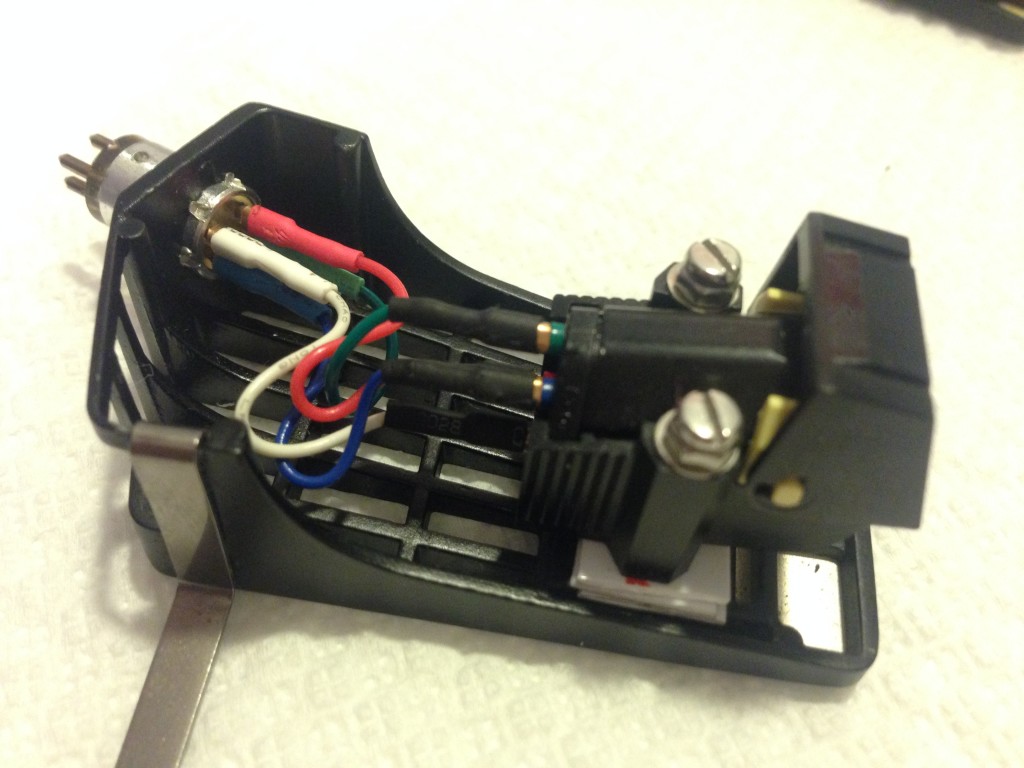Turntable mats
 Old Thorens turntable mats are made of cheap rubber and offer contact with the record only along a few circles. Probably the original idea was diminishing the areas of contact to avoid vibrations to pass from the platter to the record. I’m not sure, but it is widely accepted that different mats can perform better than the original.
Old Thorens turntable mats are made of cheap rubber and offer contact with the record only along a few circles. Probably the original idea was diminishing the areas of contact to avoid vibrations to pass from the platter to the record. I’m not sure, but it is widely accepted that different mats can perform better than the original.
Again, the original mat can be retained in order to preserve the vintage look. However, I am sure of the better performances obtainable with a different kind of mat: a PCV mat (at right).
PVC is PolyVinyl Chloride, the same plastic material vinyl records are made of. It is also known as Veklar or Forex. By matching a vinyl record with another “disc” of the same material, we disperse the vibrations through a thicker volume. Foamed expanded PVC mats can be made 3 or 5 mm thick (the foam structure aids dampening the vibrations). On Thorens turntables I prefer 5 mm (the dispersion is more effective), since the tonearm height can be adjusted accordingly (other types of turntables may not allow that).
Acrylic or an acrylic/vinyl mix is also used to make both platters and mats (namely, the excellent Funk Firm Achromat, very similar to the PVC mat). The basic idea is the same. Felt mats or cork mats are also good upgrades but I heard more sound improvement when using a thicker PVC mat. Thorens turntables, having that heavy metal outer platter, gain most from this approach. I have PVC mats made by a nearby specialized firm; they are made by precision laser cutting and are available in different colors (black, white, blue, green, yellow). You can also choose to keep the large central hole for housing the 45 RPM adapter in the same was it is done with the original mat (though I advice to use a mat with just the small hole for the spindle at the center for a better record-mat contact).
A less expensive choice available is a 3 mm thick black soft expanded foam mat I usually order from a UK dealer.
Headshell leads
 An easily overlooked sound upgrade can be obtained by replacing the leads connecting the cartridge to the tonearm in the headshell. The original ones are very thin and often heavily oxidized. Routinely, they are cleaned with deoxidizing fluid, but I always suggest a replacement: it is cheap (though if you want to spend more it is possible) and makes for a noticeable sound improvement. The replacement leads I order upon request from a UK dealer are thicker and gold plated.
An easily overlooked sound upgrade can be obtained by replacing the leads connecting the cartridge to the tonearm in the headshell. The original ones are very thin and often heavily oxidized. Routinely, they are cleaned with deoxidizing fluid, but I always suggest a replacement: it is cheap (though if you want to spend more it is possible) and makes for a noticeable sound improvement. The replacement leads I order upon request from a UK dealer are thicker and gold plated.